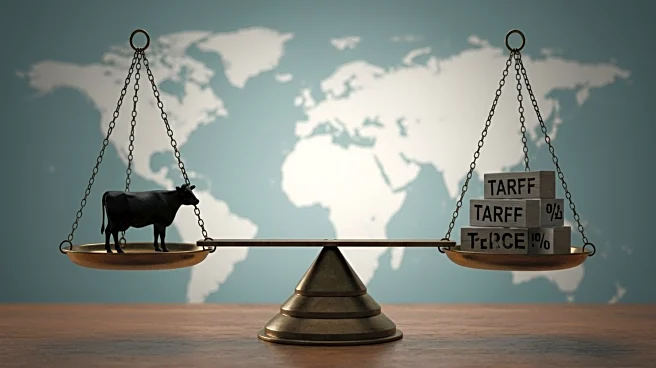What's Happening?
In recent discussions held in Washington, New Zealand's Trade and Investment Minister Todd McClay met with US Trade Representative Jamieson Greer and Secretary of Agriculture Brooke Rollins to address concerns over US tariffs impacting New Zealand exports. The talks focused on the additional 5% tariff imposed on New Zealand exports, which is part of a broader tariff strategy affecting countries with a trade surplus with the US. The discussions also covered product-specific trade investigations in sectors such as steel, aluminum, pharmaceuticals, and timber. Both parties acknowledged the importance of their trade relationship, with New Zealand applying low tariffs on US goods. They agreed to continue discussions in upcoming international meetings to explore ways to mitigate the impact of these tariffs and support their respective dairy industries, which are affected by trade-distorting practices from other countries.
Why It's Important?
The imposition of tariffs and the ongoing trade discussions between the US and New Zealand have significant implications for both countries' economies, particularly in the dairy sector. The tariffs could potentially increase costs for New Zealand exporters, affecting their competitiveness in the US market. For the US, maintaining a balanced trade relationship with New Zealand is crucial, as it helps sustain economic ties and supports industries like dairy, which are vital to both economies. The outcome of these discussions could influence future trade policies and set precedents for how the US handles trade surpluses with other nations.
What's Next?
Trade officials from both countries are expected to meet in the coming months to further discuss the impact of tariffs and explore practical solutions to provide greater certainty for exporters. Additionally, further meetings are scheduled during the ASEAN Trade Ministers’ Meeting in Malaysia and the APEC Leaders’ Summit in Korea, where both parties will consider next steps to strengthen trade relations and address shared concerns in the dairy industry.














